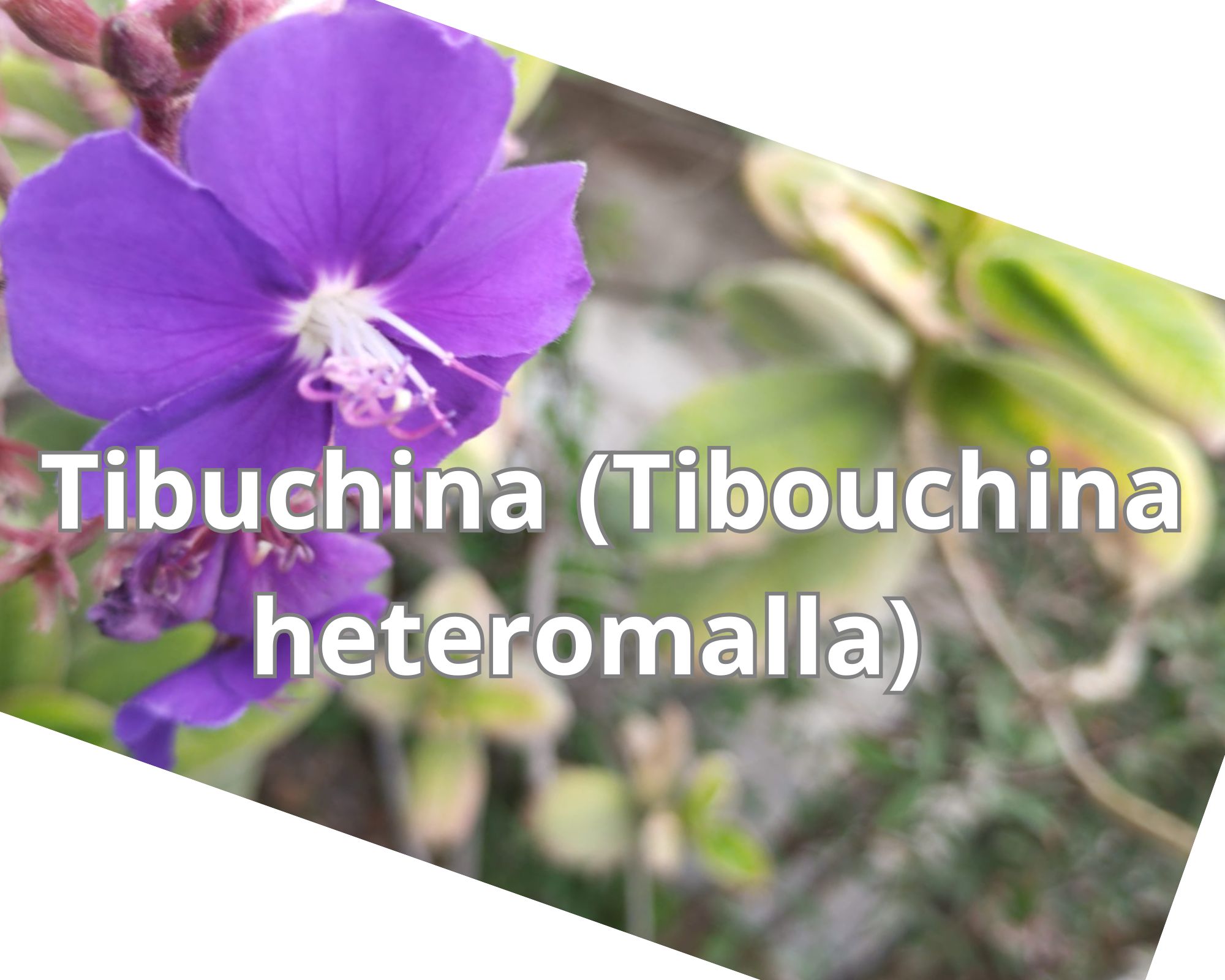
**Greetings to the members of this community of gardening enthusiasts.**
**This is my first post, and I thought it would be interesting to share some characteristics of this plant and, in particular, the family to which it belongs**
***
Among the many plant families that group together species with common morphological characteristics, there is one that is very easy to identify at first glance by the type of venation on its leaves. This is the Melastomataceae family.
Plants generally have two types of veins: parallel and reticulate. This characteristic is very important because, together with other characteristics, it separates two large groups of plants: monocotyledons and dicotyledons, which are the two major classes of angiosperms, i.e., flowering plants. In monocotyledons, the veins run parallel to the main vein of the leaf and are all of the same thickness, while in dicotyledons, the veins branch off from the main vein.
Melastomataceae have several veins that run from the base to the apex, but also transverse veins that connect. The word Melastomataceae originates from the genus Melastoma, which is a compound word meaning “black mouth” because the fruits of this plant leave the mouth black when eaten.
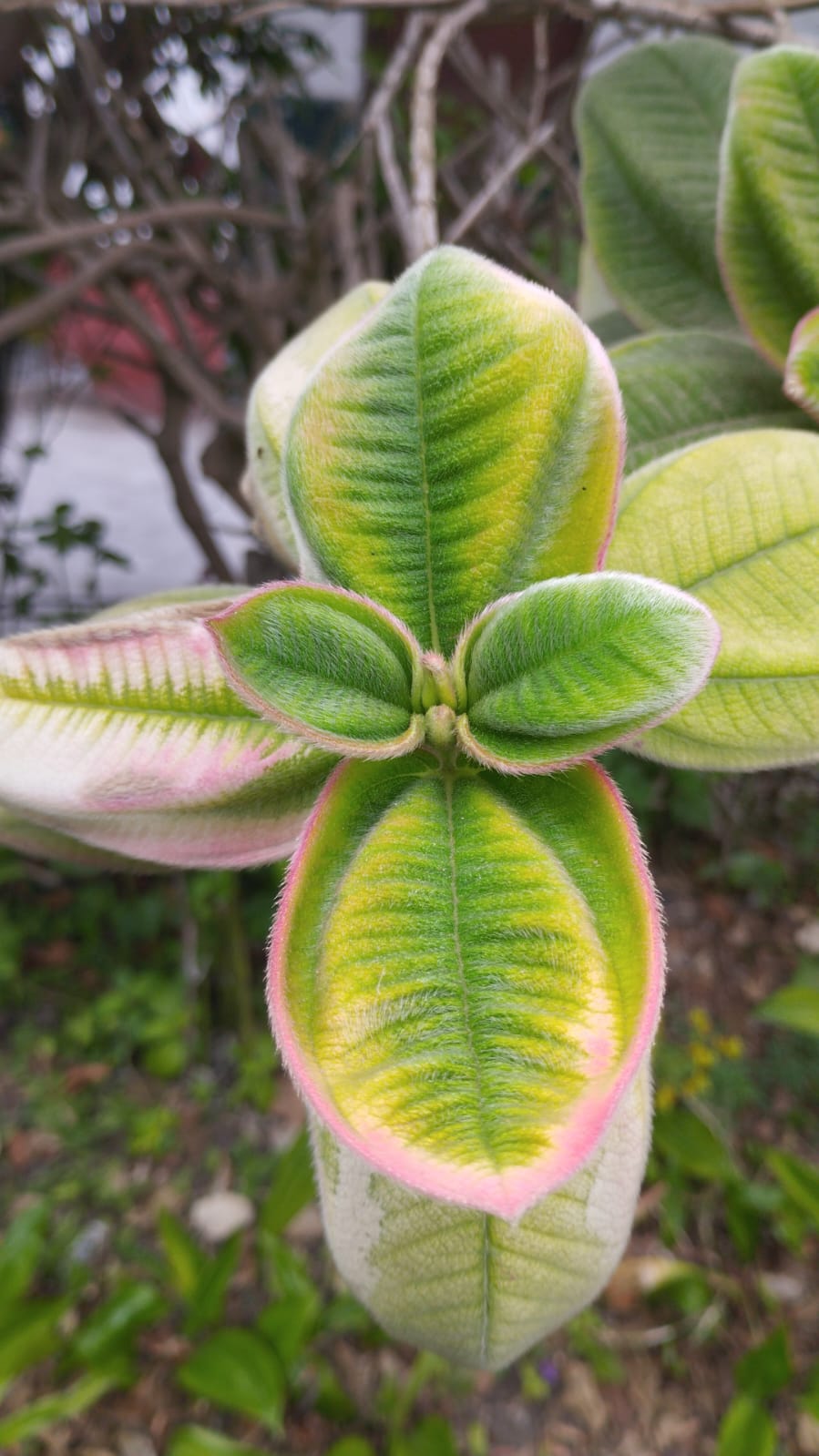Tibouchina grandimalla
>And in the photograph, you can see a pinkish coloration around the edges of the older leaves.
***
It is very interesting to observe the varied patterns of development that differentiate species or groups of plants. Why these variations and adaptations to different environments have occurred is a question that many plant scholars ask themselves and try to answer with scientific evidence. And it is difficult to determine at what point in evolution these changes occurred that were fixed in the genetic material.
The type of venation is a very important characteristic because it determines the distribution of water and mineral salts in the leaf, as well as the sugars produced in photosynthesis and distributed from there to the rest of the plant.
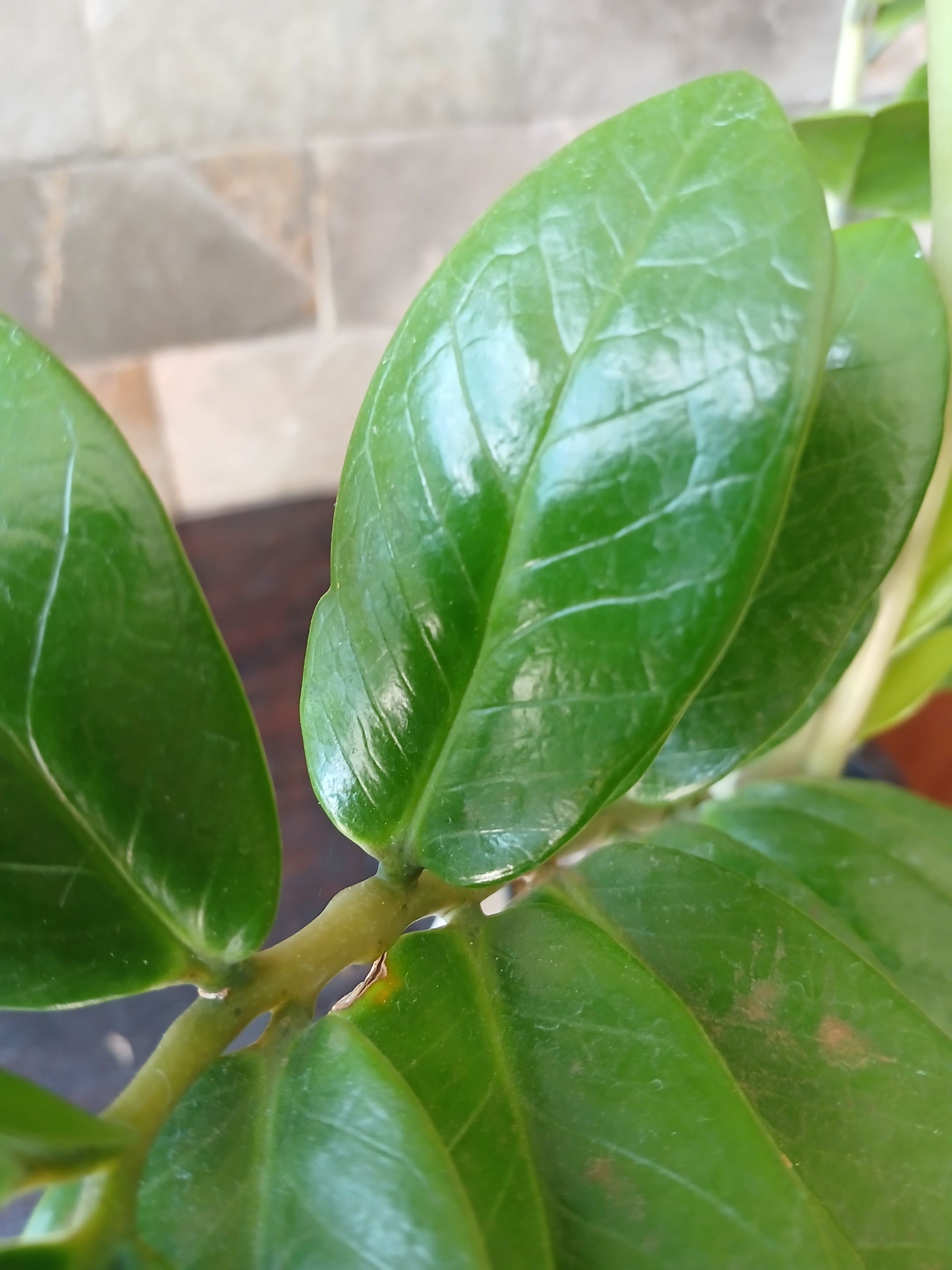 Reticulated venation in Millonaria plant (Zamioculcas zamiifolia)
The relationship between the characteristics of the venation system and gas exchange is also well known. Its function is related to productivity and adaptation to environments. And something very important is that the venation also supports the leaf.
Plants in this family live in tropical and humid environments, such as the species found in Henry Pittier National Park, a mountain with a cloud forest located in the coastal mountain range in Venezuela, where species of this family live. It is one of the most numerous. There, under the shade of large trees, these plants have adapted to the amount of light that passes through the canopy.
The species shown in the photographs is a plant called the "Princess flower" or Tibuchina (Tibouchina heteromalla). It is a shrub with very striking flowers and is often planted as an ornamental.
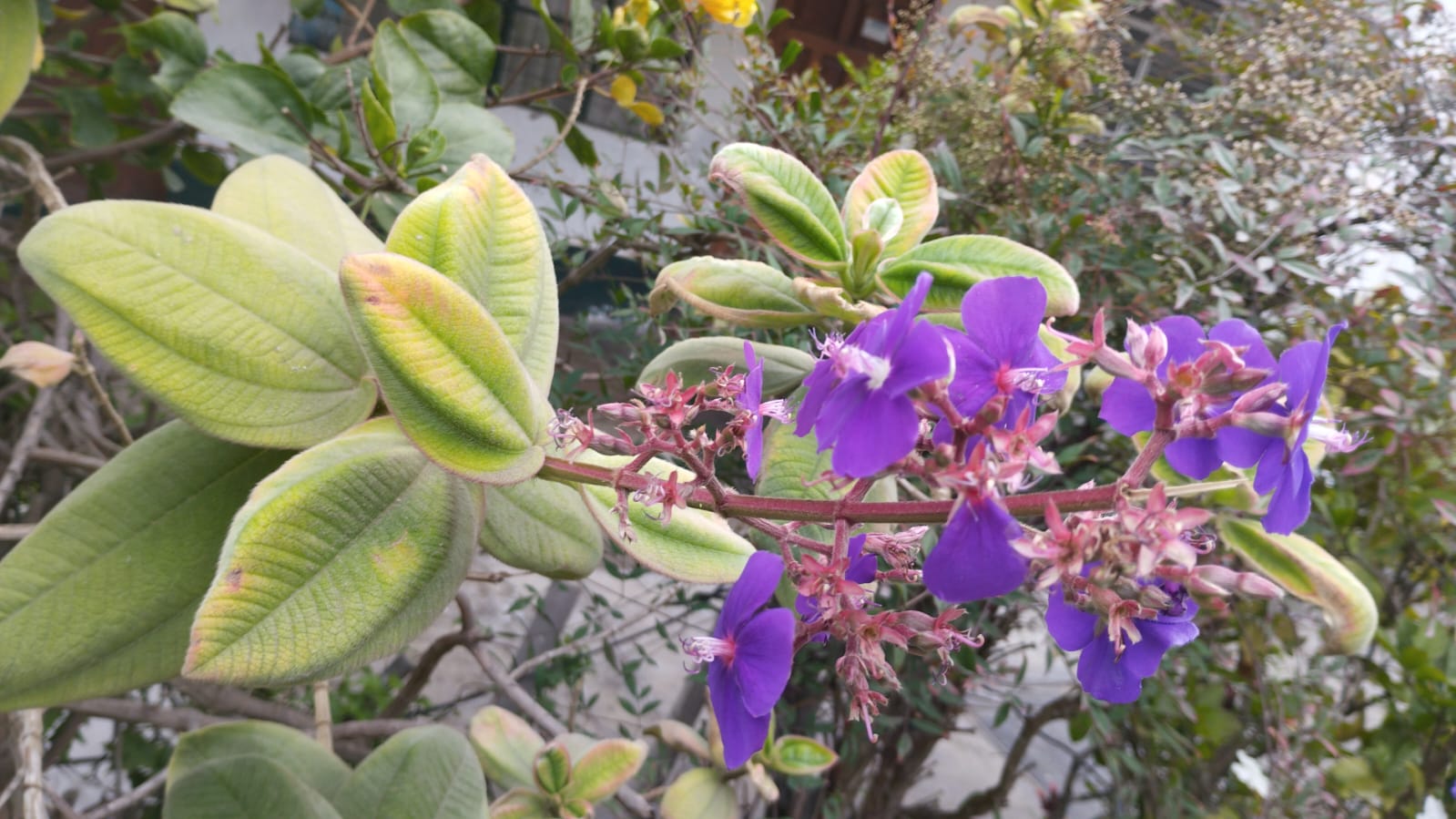
Although it is a tropical plant, it has been taken to other subtropical regions such as this one on the coast of Peru, where temperatures are lower and the climate is dry.
The leaves, with their typical veins, are covered with abundant soft gray and white hairs that give them a velvety appearance.
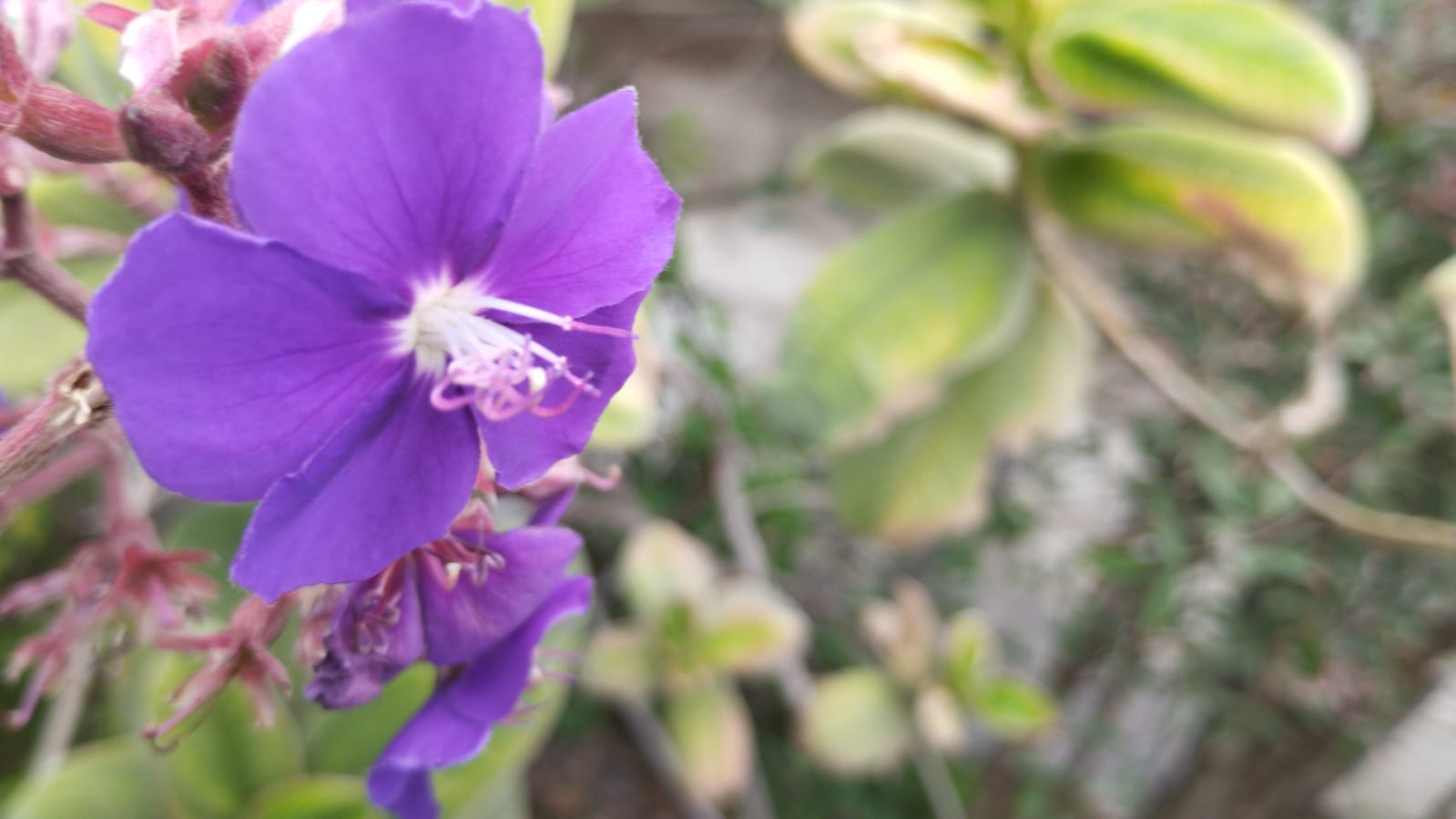
Its purple flowers with their protruding pistils are very striking. If you are going to grow this plant, you should know that it needs to be protected from the cold because it is not accustomed to low temperatures. As it is a plant that grows naturally in tropical rainforests, it can be placed in full sun with sufficient humidity.

Thank you very much for reading
***

Saludos a los miembros de esta comunidad de amantes de la jardineria.
Esta es mi primera publicación y me parecio interesante compartirles algunas caracteristicas de esta planta y en especial de la familia a la cual pertenece.
Entre las muchas familias de plantas que agrupan a las especies con características morfológicas comunes, esta una que es muy fácil de identificar a simple vista por el tipo de nerviación de sus hojas. Es la familia Melastomatacea.
Generalmente las plantas tienen dos tipos de nervaduras: paralelas y reticuladas Esta característica es muy importante porque junto con otras caracteristicas, separa dos grandes grupos de plantas: Monocotiledoneas y Dicotiledoneas que son las dos grandes clases de las Angiospermas, es decir plantas con flores.
En las monocotiledóneas los nervios van paralelos a la nervadura principal de la hoja y son todos del mismo grosor, mientras que en las dicotiledóneas, la nervadura se ramifica a partir de la nervadura principal.
Planta Millonaria (Zamioculcas zamifolia
***
Las Melastomataceas tienen varias nervaduras que salen desde la base hasta el ápice, pero también nervaduras transversales que se conectan.

La palabra Melastomatacea se origina del genero Melastoma que es una voz compuesta que significa Boca negra porque los frutos de esta planta al comerlos dejan la boca negra.
Es muy interesante observar los variados patrones de desarrollo que diferencian especies o grupos de plantas. El por qué han ocurrido estas variaciones y adaptaciones a diferentes ambientes es una pregunta que muchos estudiosos de las plantas se hacen y tratan de responder con evidencias científicas. Y es dificil determinar en que momento de la evolución se dieron estos cambios que fueron fijados en el material genético.
El tipo de nerviación es una característica muy importante porque determina la distribución del agua y sales minerales en la hoja y también de los azúcares producidos en la fotosíntesis y desde allí distribuidos al resto de la planta.
Y es conocido también la relación de las características del sistema venoso con el intercambio gaseoso. Su función está relacionada con la productividad y adaptación a ambientes. Y algo muy importante es que la venación también le da soporte a la hoja.
Las plantas de esta familia viven en ambientes tropicales y húmedos como las especies que se encuentran en el Parque Nacional Henry Pittier, una montaña con una selva nublada ubicada en la cordillera de la costa en Venezuela, donde habitan especies de esta familia. Siendo una de las mas numerosas. Allí bajo la sombra de los grandes árboles estas plantas se han adaptado a la cantidad de luz que atraviesa el dosel.
Esta especie que les muestro en las fotografías es una planta llamada flor princesa o Tibuchina (Tibouchina heteromalla)

Es un arbusto de flores muy llamativas y se siembra mucho como ornamental.
Aunque es una planta tropical se ha llevado a otras regiones subtropicales como esta en la región costera de Perú, donde las temperaturas son mas bajas y el clima es seco.

Las hojas con su nervadura típica está recubierta por abundantes pelos suaves de colores grises y blancos que le dan un aspecto aterciopelado. Y en la fotografía se puede observar una coloración rosada por el borde, en las hojas mas viejas.
Sus flores de color morado con sus pistilos exertos son muy llamativas.
Si vas a cultivar esta planta debes saber que hay que protegerla del frío porque no está acostumbrada a las bajas temperaturas. Como es una planta que crece naturalmente en selvas tropicales puede estar a pleno sol y con suficiente humedad.

Muchas gracias por leer
**Referencias consultadas**
https://nph.onlinelibrary.wiley.com/doi/10.1111/nph.12253
https://www.monaconatureencyclopedia.com/tibouchina-heteromalla/?lang=es
***
References consulted
https://nph.onlinelibrary.wiley.com/doi/10.1111/nph.12253
https://www.monaconatureencyclopedia.com/tibouchina-heteromalla/?lang=es

Todas las fotografias son propias.
La traducción del texto al inglés lo realicé en www.deepl.com
Tibuchina with its characteristic veins (Eng/Esp)
@popurri
· 2025-11-03 19:57
· HiveGarden
#hivegarden
#gardening
#flora
#spanish
#entropia
#hispapro
#palnet
#waiv
Payout: 0.246 HBD
Votes: 38
More interactions (upvote, reblog, reply) coming soon.